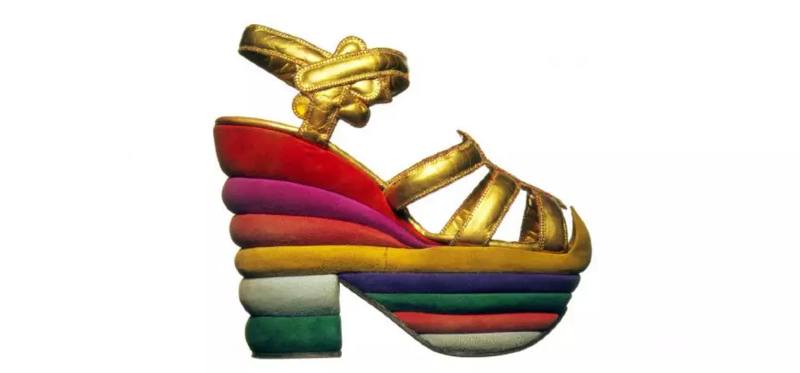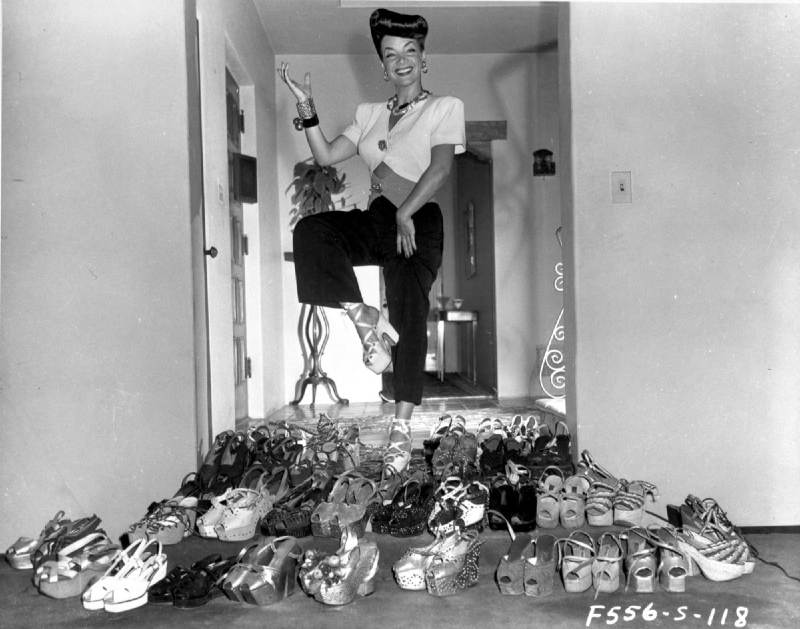Wedge 1940s
cork sole, from ancient Greece to the present day
The wedge is a high sole that rises without detachment towards the heel, thus replacing the heel. Made of cork, wood, leather, straw, or covered with fabric, it has been used since ancient Greece. Precisely in this era, some social categories distinguished themselves by wearing shoes with very high soles, including tragic actors and courtesans.

In the Middle Ages: the slipper
They were then revived in the Middle Ages and in the Renaissance with the name of “slipper”. They could reach up to 50 cm and were mainly used to attract attention, but also to avoid getting dirty.
Ferragamo, wedges an emblem of an era
In the 20th century, the wedge shoes and sandals designed by Ferragamo are famous and entered the history of costume. Seeking to combine comfort and class, elegance and stability, Ferragamo wedges from the 1930s are a hallmark of the era. Among the most important, is the rainbow model made for the actress Judy Garland certainly stands out, who turned 82 in 2020.

La Miranda
The style with high-arched heels is also called Miranda because Carmen Miranda wore it in the 1940s when Ferragamo himself designed the shoes for her that would become the iconic symbol of the Portuguese singer.

The comeback in previous decades
It returned to fashion in the ’60s, especially for summer sandals, and again at the end of the century, after Madonna’s interpretation in Alan Parker’s film, Evita (1996).
The Buffalo platform
Subsequently, the Spice Girls launched the Buffalo platform into the mainstream, special wedges that conquered a new generation of kids in the late 1990s. Buffalo wedges are back in vogue in the new millennium, being used by some of today’s biggest stars such as Gigi Hadid and Rita Ora, becoming an icon of pop culture.
Read also:
Sustainable thinking: exhibition at the Ferragamo Museum
Andy Warhol: The Artist Symbol of Pop Art

River Island

